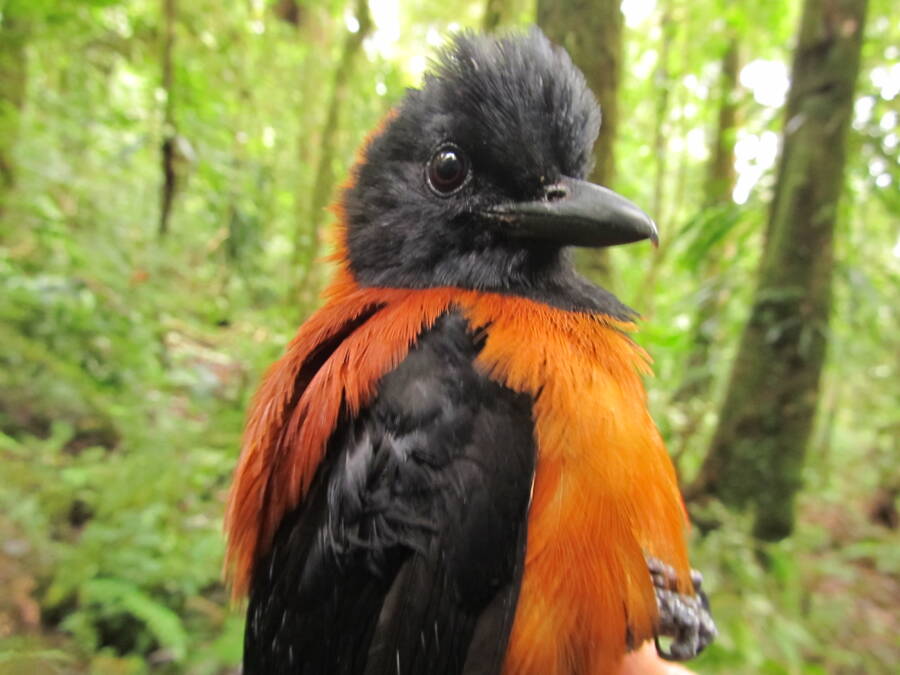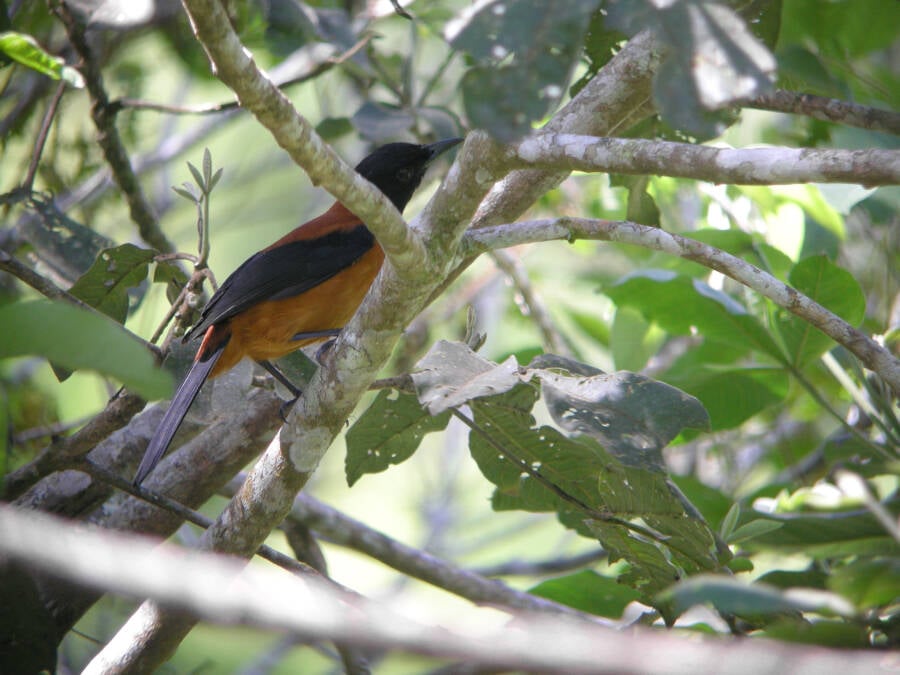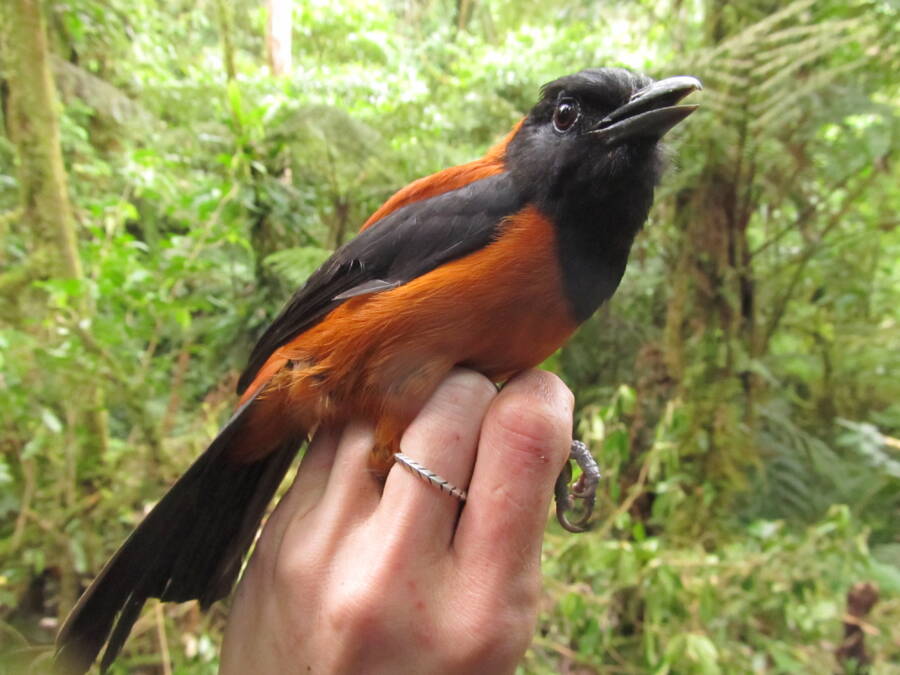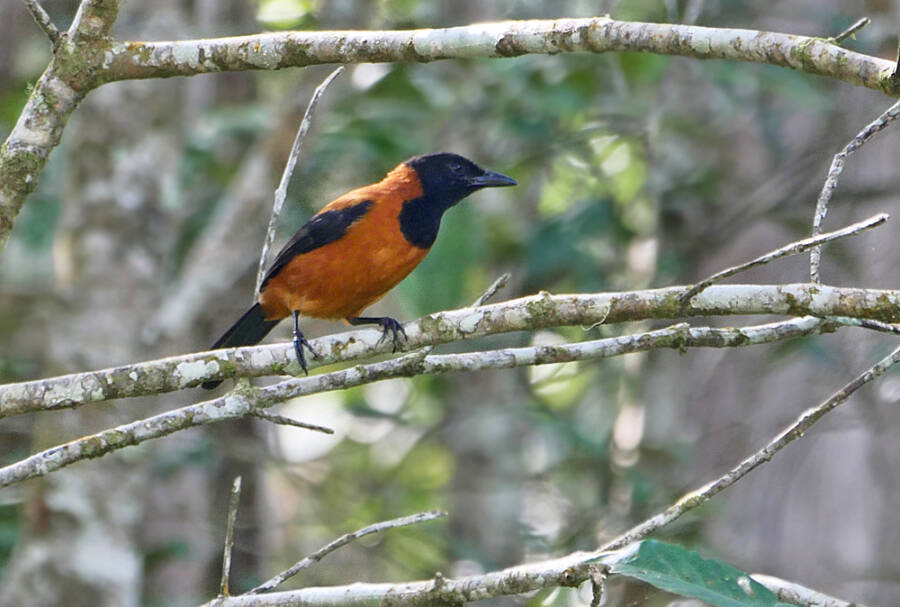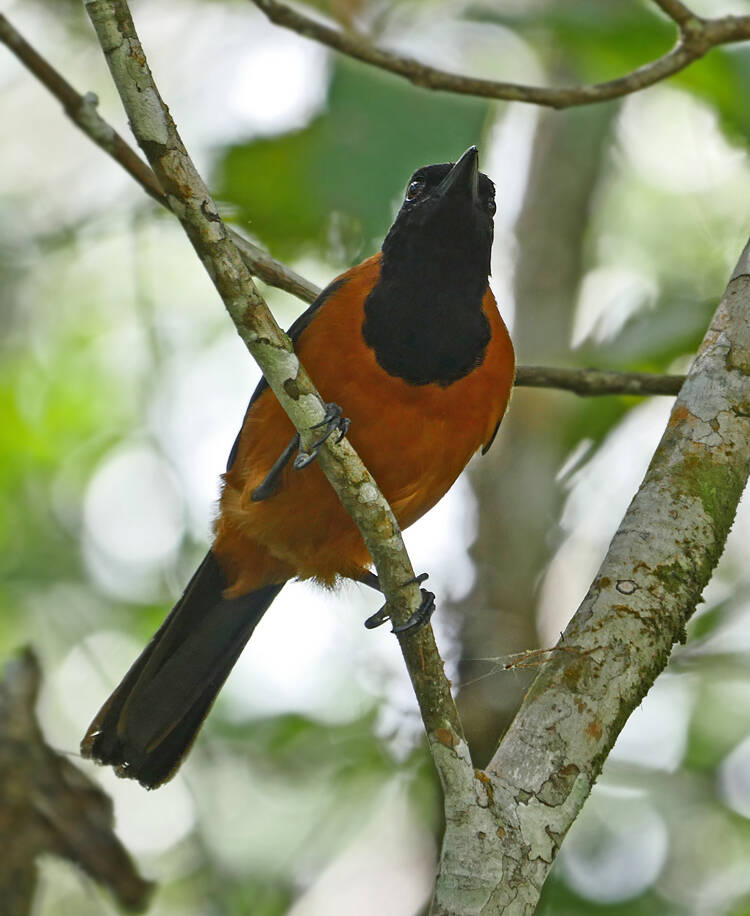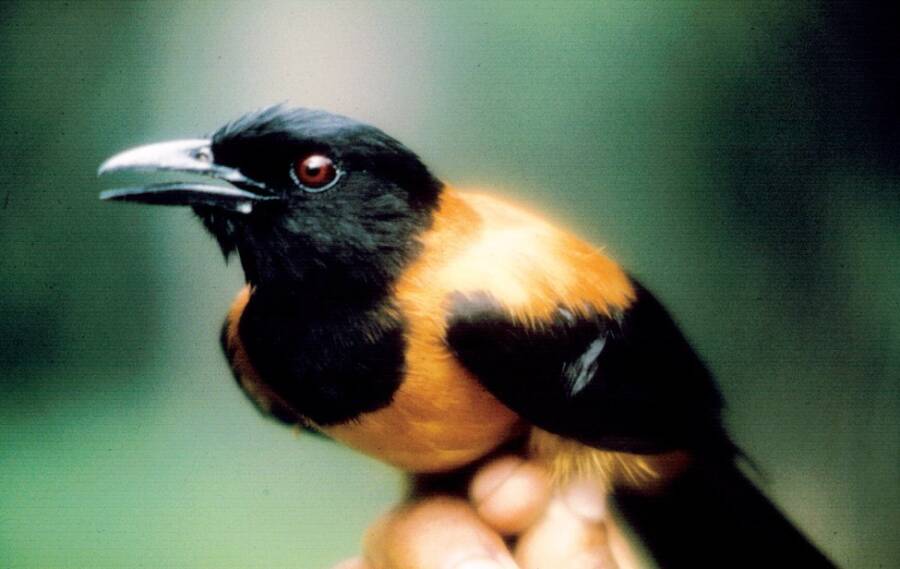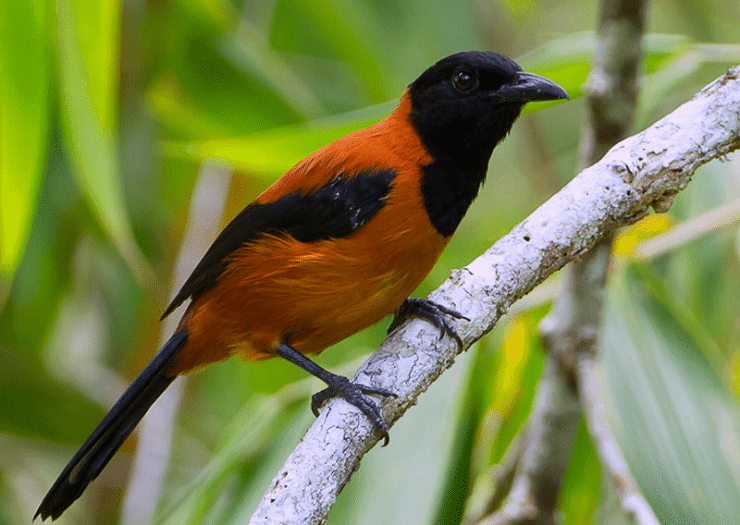The Scary Hooded Pitohui Bird

Wikimedia CommonsA hooded pitohui — presumably with neurotoxin extracted — being held in Papua New Guinea.
The hooded pitohui is one of the only toxic birds known to mankind. The bird’s feathers themselves contain one of the most potent neurotoxins ever discovered, making their striking color and pleasant appearance a sneaky evolutionary trick that could prove fatal.
Native to the forests of New Guinea, the hooded pitohui, or Pitohui dichrous, is one of the first poisonous birds to ever be documented. That trait was discovered in the late 1980s as graduate student Jack Dumbacher assisted the Smithsonian Institute’s Bruce Beehler in New Guinea.
Their goal was to study the bird’s mating behavior, but that all rapidly changed when Dumbacher cut his hand on the bird’s claws. The research team had caught a group of them in an assortment of nets, with Dumbacher trying to remove one and noticing that the scratches had hurt more than anticipated.
The tingling sensation was followed by numbness, with Dumbacher misguidedly licking the cut — and then noting his mouth was losing all feeling, as well. When he asked the natives if they had anything important to say about this particularly colorful bird, they responded simply:
“Stay away from the rubbish bird!”
Dumbacher survived, and an analysis of the bird's feathers at the National Institutes of Health in Maryland yielded fascinating results. Bio-organic chemist John Daly injected some of the toxins into mice and saw them partially paralyzed as a result. High-level injections resulted in death.
Despite the lethal neurotoxin, the hooded pitohui are tantalizing songbirds. About the size of a dove, the bird reaches 9 inches long and has a black-feathered head and orange-red plumage on its belly. Their black claws and black beak, meanwhile, are pretty strong — and not to be underestimated.
Perhaps just as impressive as their toxicity is the stench this bird emits. Thought to be aposematic, the evolutionary trait is believed to ward off predators. As for their own diet, these birds are omnivores and rely on both plants and animals like melyrid beetles — from which they get their batrachotoxins.
As for how these birds evolved to consume highly poisonous beetles as their primary food source remains anyone's guess. What's clear is that one tiny dose of this neurotoxic steroidal alkaloid can quickly lead to paralysis, cardiac arrest — and death. In other words:
Stay away from the rubbish bird.
